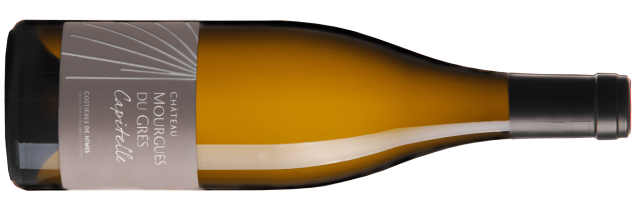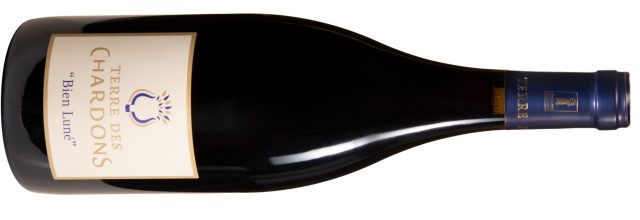Costières de Nîmes: the only Rhône Valley appellation with a maritime influence
What’s the first thing that comes to mind when you think of the Rhône Valley? Fields of lavender, olive groves, stony vineyards? Certainly. The sea? Not so much. But there is one appellation that is defined by its maritime influence. db attended a recent Costières de Nîmes masterclass hosted by Rhône expert Matt Walls and winemaker Jérôme Castillon to find out more.

Costières de Nîmes is the most southerly appellation in the Rhône Valley; if you travelled any further south, you’d be standing in the Mediterranean. It’s one of the eight satellite regions that surround the central Côtes-du-Rhône growing area.
This is home to some of the most ancient vineyards in France. The town of Nîmes itself features some incredibly well-preserved Roman ruins, but viticulture here predates these invaders, going back to 600 BC. In the 14th century, wines from St Gilles, Nîmes and Costières were among the most popular at the Papal Court in Avignon. The modern appellation was established in 1986.
The vineyards of Costières de Nîmes are located next to the Camargue, a protected natural area with a strong culture all of its own. It’s home to wild white horses, diminutive black bulls, tall cacti and marshland birds.
With a wealth of diverse plants and wildlife, it’s no wonder that local winemakers are so committed to sustainable practices. An impressive 31% of plantings are certified organic or biodynamic (or in conversion), and 53% are certified HVE (Haute Valeur Environnementale). That’s a whopping 84% farmed with a sustainable approach.
This might be a unique natural landscape, but look down to the soils and it’s unmistakably Rhône – Costières de Nîmes is made up of a series of long banks of pebbles, “endless fields of galets roulés,” according to Walls, “the emblematic stony soils of the Rhône.” The appellation stretches across 24 villages, but only the best parts of each are allowed to use the appellation.
The soils are classically Rhône and the climate is too; it’s hot and sunny in summer, wetter during winter months. It also gets swept by the Mistral, the dry north wind that whistles down the Rhône Valley.
But there is one additional climatic effect that makes Costières de Nîmes unique within the Rhône, and which has a strong influence on the style of the wines. During summer months, the sun beats down on the stones, which warm up, causing hot air to rise. This creates a freshening effect: it sucks in cool sea breezes and creates clouds, shading the vineyards in the afternoon. So although this is the most southerly Rhône Valley appellation it’s not the hottest.
This convection effect is key to the freshness found in all three colours. Red wines made up 47% of production in 2023; 41% were rosés and 11% whites. For reds and rosés, Syrah plays an unusually significant role for the Southern Rhône, as it takes on a perfumed elegance more commonly associated with the north. Whites major on Grenache Blanc and Roussanne, and share a similar lifted, aromatic profile.
We tasted two whites, two rosés and four reds to get a cross section of what they produce.
The rosés

The first rosé was from Château d’Espeyran, a family domaine dating back to 1791. Their ‘L’Envol’ rosé 2023 is a blend of 80% Grenache and 20% Syrah that clocks in at just 12.5% ABV. It’s a light, crisp and well-balanced dry rosé, pale in colour, with subtle raspberry and watermelon notes. It’s an impressive wine that would work well in the UK market

The second was a more traditional style. The 2023 Moulin d’Eole rosé is made by Vignerons Propriétés et Associés, a boutique co-operative of 6 domaines. This is a blend of 40% Syrah, 40% Grenache and 20% Mourvèdre. It’s medium-bodied, fairly pale in colour, with a certain richness and character that would help it stand up to light dishes – a textural rosé for the lunch table.
Both producers are certified HVE and are open to UK distribution.
The whites
Partner Content

We tasted two contrasting styles of white. The first was Cave de Pazac ‘Veuve Mathilde’ 2023, from a small co-op farming just 280ha of vineyard. Unusually for a co-op, all their wines are certified HVE. It’s grown in the northern part of the appellation, so it has less sea influence, and the result is a powerful and juicy white with pear and melon flavour, a real burst of fruit. It’s a blend of 40% Grenache Blanc, 25% Vermentino, 20% Roussanne and 15% Viognier, all harvested at night.

The following white was from Château Mourgues du Grès, a biodynamic estate situated closer to the Mediterranean. At three years of age, their ‘Capitelle’ 2021 showed no sign of tiring. A supremely elegant and silky blend of 48% Grenache Blanc, 45% Marsanne and 7% Rolle (a.k.a. Vermentino), it’s medium-bodied, very well balanced and beautifully refined, demonstrating the incredible potential for white wines here.
Both estates are seeking UK distribution for these wines.
The reds

The series of four reds began with the lightest, the biodynamic Terre des Chardons ‘Bien Luné’ 2023, a blend of 60% Grenache, 30% Syrah and 10% Cinsault. Easy to drink but full of personality, this is a contemporary style of Rhône red that would drink well lightly chilled. Really attractive and easy to love with persistent raspberry and black cherry flavours; no winemaking additions are used and no oak.

Domaine la Bergerade ‘Esprit de Famille’ 2022 is the first vintage of this new estate – and a very promising debut. It has impressive concentration, and well-integrated oak adds complexity and elegance without dominating the pure black fruit flavours. They’re converting their 30ha of Grenache and Syrah to organics.

The next two wines were from 2021, a tricky year throughout France due to frost, but Costières de Nîmes was untouched – another benefit of being so close to the sea. Domaine de Poulvarel ‘Les Perrottes’ 2021 was just beginning to develop some earthy, leathery notes after a few years in bottle, but no hurry to drink. Certified organic, it’s a blend of 65% Syrah, 30% Grenache, 5% Carignan, all hand-picked, half aged in tank and half in barrel for 12 months.
We finished the tasting with Château L’Ermite d’Auzan ‘Sainte Cécile’ 2021. Jérôme Castillon is the third generation to work the estate, and he’s recently been joined by his son, Tanguy. Together they work the 80ha of vineyards biodynamically, and have even started making and applying their own essential oils on the vines. “It’s a type of aromatherapy,” that wards off disease, says Castillon, and it has allowed them to stop spraying with copper as a result. Their ‘Sainte Cécile’ comes from their oldest vines, a blend of 35% Mourvèdre, 35% Syrah and 30% Grenache. It combines generosity and freshness, with long-lasting blackberry, dark chocolate, smoke and spice.
The first two reds are seeking distribution; Domaine de Poulvarel is imported by Hourlier Wines, Château L’Ermite d’Auzan is available via Boutinot.
A compelling offering
It’s not often you find an appellation that can hit high notes across all three colours, but Costières de Nîmes can produce reds, whites and rosés with impressive freshness, concentration and detail.
But there are several other factors that make these wines an attractive commercial proposition: affordable pricing, local character and strong green credentials. No wonder the UK is now their biggest export market, as more and more UK importers are taking note. And on the back of this tasting, it’s not hard to see why.
Related news
Castel Group leadership coup escalates
For the twelfth day of Christmas...
Non-vintage is ‘putting together a puzzle’ says Champagne Lallier




